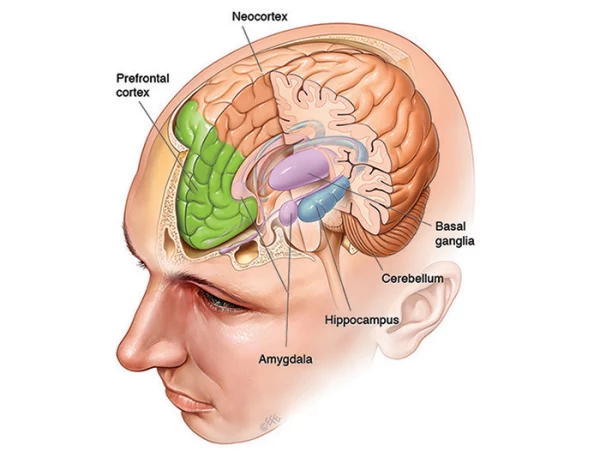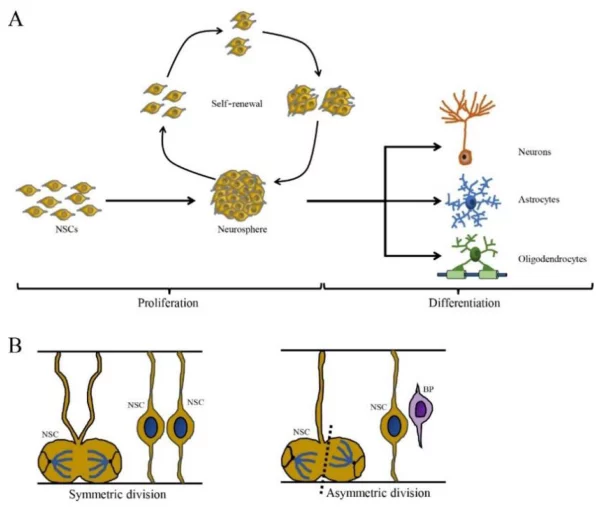Recently, a team of researchers at University of Queensland has decoded one of the long-standing mysteries of the human brain: how it manages emotions and stores memories. The latest research shows that there are at least two distinct types of stem cells in the hippocampus – a region crucial for learning and memory. Previously, scientists believed that the stem cells in this region were homogeneous, but this new discovery indicates that each type of stem cell has a specific role, helping explain why the hippocampus can regulate both emotions and learning.
“Previously, we thought that all the stem cells in the hippocampus were the same. However, the new study reveals the existence of two different types of stem cells, each performing distinct functions,” said the research team from University of Queensland. This discovery not only helps scientists better understand how the brain functions, but also opens up opportunities for treating memory and mood-related disorders. (Source: University of Queensland, published in Nature Neuroscience, 2023)

The hippocampus, a region of the brain, plays a key role in memory formation and emotion regulation. By analyzing the stem cells in this area, the research team discovered that these cells develop into neurons with different characteristics, allowing the brain to coordinate both of these important functions. Understanding this mechanism could lead to significant applications in the treatment of psychological disorders such as depression, anxiety, and dementia.
“We discovered that new memories create unique activity patterns in the brain, which help us identify the thoughts or ideas the participants are thinking about. This is a major step forward in understanding how the brain stores and processes information,” according to the research team (Source: University of Queensland, published in Science Advances, 2023).
One of the notable findings of the study is the difference in the “signatures” of concepts related to animals with similar habitats. Species with similar characteristics (such as their environment) produce very similar brain activity “signatures.” This shows that the brain has the ability to categorize and link information based on shared traits, improving its ability to organize and store memories.
“We were able to read the thoughts of the participants simply by tracking their brain activity patterns. These activity signatures allowed us to know exactly which animal they were thinking about, and this could help us understand how the brain connects new information with old information,” the research team emphasized (Source: University of Queensland, published in Neuron, 2023).

This discovery provides a new perspective on the mechanisms of memory storage and emotion regulation in the brain. These findings not only help scientists better understand how the brain processes information but also open new prospects for treating memory and mood-related disorders. Understanding the classification of stem cells could help develop more effective therapies for conditions such as depression and anxiety.
This is an important advancement in neuroscience, unlocking potential treatments for complex neurological disorders and offering deep insights into how the brain controls essential aspects of human life, such as emotions and memory.


HPX24h > Science > New Discovery: How the Brain Manages Emotions and Memory
Tagged Articles
Heart and Brain Health: How to Effectively Prevent Cognitive Decline?
Why Do Experts Believe Alzheimer’s Is an Autoimmune Disease Rather Than a Brain Disorder?
Turning Dreams On and Off with Brain-Control Technology: A Breakthrough in Sleep Researc
Recreating the Mouse Brain in a Virtual World: The Future of Neuroscience
Top Reads from This Category
Science
Successful Penis Transplant Surgery: A New Breakthrough in Medical Science
Science
The Mystery of the Brain Network that Regulates Human Attention Has Been Unveiled
Science
Stem Cell Liver Regeneration: A New Solution for Patients with Severe Liver Failure
Science
Turning Snake Venom into Life-Saving Medicine: A Promising New Yeast Cell Technology
Science
Your Body Is Not the Same as It Was 10 Minutes Ago: The Continuous Regeneration Process of the Human Body
Science
A New Drug Could Treat Depression Within Just 24 Hours
Science
Robot Walker: A Breakthrough in Helping Stroke Survivors Regain Natural Walking
Discover New Topics
Science
Cow-Free Milk: The Food Revolution Shaping Our Future
Uncategorized
Why Do Experts Believe Alzheimer’s Is an Autoimmune Disease Rather Than a Brain Disorder?
Space
Three Earth-Like Planets That Could Support Life: New Discovery from NASA
Science
Discovery of a New Stem Cell: A Major Advancement in Creating Human Organs
Science
Discovering Enzymes That Stimulate Hair Regrowth: A New Opportunity in Hair Loss Treatment
Health
Unlocking the Mystery: How the Brain Controls Body Weight
Healthy Eating
The Reasons You Should Eat These Fruits During Pregnancy to Reduce Fatigue and Anemia
Health
Can Gray Hair Be Restored? What Science Says About Regaining Natural Hair Color
Space
Scientists Believe Water Ice Could Exist on the Giant Asteroid Vesta
Healthy Eating
Understanding the Important Role of Carbohydrates in Health
Fitness
Fat-Burning Heart Rate: The Key to Optimizing Your Workout
Fitness
What is the Ideal Heart Rate for Running?
Fitness
hould You Do Cardio or Lift Weights to Burn Calories More Effectively